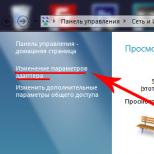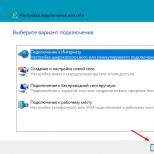DIY embossing folder. Embossing on paper at home, its types, necessary materials, help and tips for beginners. Embossing with a stencil
In fact, there are an incredible amount of methods and types of embossing on paper. Scrapbooking has become so popular that needlewomen create for themselves more and more new ways to create beautiful prints at minimal cost.
You will now learn about some of them in the article on embossing on the most ordinary paper, which can be done at home.
Embossing on paper at home in several versions
We disassemble the first method - foil stamping
Foil stamping can be done with a press, then the pattern will turn out to be convex, or you can simply use toner-sensitive foil.
An unconditional advantage in foil stamping is that the picture remains not just convex, but colored, depending on the color of the foil you choose. Very often, gold stamping is used on business cards and documents - it is this color that looks the most rich and presentable, attracting business partners.
The embossing process with a press is very laborious; it is necessarily preceded by the creation of a layout that will be pressed into the paper. At home, such an activity is too energy-intensive, and, often, it simply does not justify itself, because at home you do not create a stream of identical products, and therefore stamps are often used no more than one or two times.
Therefore, we will consider the option of stamping with toner-sensitive foil.
The foil stamping technology itself is that when exposed to high temperatures, the foil ink is fused with the toner, thus it remains on the paper only in those places where there is a pattern.
First, the desired picture is printed on paper using a laser printer, then a piece of foil is placed on the picture and heated. Adequate temperature can be achieved by passing the paper through a laminator or by heating it with an iron.
This method is very inexpensive and easy to implement.

Exploring Method Two - Crimper
Sometimes it is necessary to push back not some small pattern, but the whole sheet of paper. In this case, small prints will not work - the embossing may be uneven, the distances between the patterns turn out to be uneven, and instead of a beautiful sheet, a simple draft is obtained. So how do you make an even, uniform embossing all over the sheet?
A special tool, a crimper, helps the craftswomen in this.

The advantages of the crimper are that there is no limitation on the length of the sheet on which the pattern will be applied, and the crimper is very simple to work with. The disadvantages are that there is a limitation on the width, one crimper can apply only one pattern, as well as the costs of purchasing it are quite significant - all this repels needlewomen from using this method.
This method was presented on the blog of one needlewoman. It is very simple and convenient when you need to emboss the entire sheet without resorting to any technique.
Materials you will need: water, an embossing folder, scrap paper, ink (optional), and a rolling pin.
If you want the embossing to be in color, then the folder for embossing from the inside on one side should be painted over in advance with ink of the color you like.
Moisten a sheet of paper a little with water and put it in a folder for embossing, and then, with maximum pressure, draw a rolling pin over it.
The result is pleasing to the eye - neat embossing with some antiquity effect on the entire sheet:
If you do not have a folder for embossing, try to find a suitable embossed material at home - if you press hard enough, the impression will still remain.
Learning to work with stencils quickly and easily
Create a stencil and attach it to your card. You can use glass and a light source placed under it so that the blank of the card lies on the stencil, but the drawing still shines through on it.
And hand emboss with special dots tools, just pressing on the edges of the stencil. It is not necessary to push through the entire pattern - the impact on the edges in itself will create sufficient embossing.

Now you can choose your own version of embossing on paper yourself, which you can do without expensive equipment and bulky machines.
Related videos
Watch a video that demonstrates your options for embossing on paper at home:
Embossing (embossing) is becoming an increasingly popular and irreplaceable technique in scrapbooking. Indeed, the appearance of the product, be it a postcard or an album, is significantly transformed, because the three-dimensional image on the surface adds a certain zest to your masterpiece. The vastness of the Internet is filled with a sufficient amount of information on the embossing technique.
In short, for this technique you need to have a stencil made of dense material, cardboard (paper, fabric) to be embossed on, and a stylus - a tool for translating the image. And then everything is simple: the image is transferred through a stencil onto fabric, paper or cardboard. It goes without saying that all of these materials can be purchased at any craft store. However, is it worth spending money on this if you are a beginner craftsman and are not yet sure that you will continue to engage in this type of needlework? Of course, you can make the stencils yourself, but it will take a lot of time! Perhaps it is worth looking around, what if your interior already has ready-made materials for a full-fledged embossing? In this master class, I will show you how you can make an interesting embossing effect on cardboard or paper from improvised household items.

1. Colander. This item is in every woman's kitchen! Isn't it a stencil for you? Procedure:
1) Apply cardboard and fix with electrical tape. I draw your attention to the fact that it is necessary to fasten the cardboard with electrical tape, and not with scotch tape, since electrical tape does not damage the paper.

2) We put the colander on the chair, next to the chair we put a table lamp or flashlight with the light up.

Now all the holes are perfectly visible through the cardboard.
3) We take the stylus. A stylus in needlework is a stick with a metal ball at the end. You can replace it with an ordinary non-writing ballpoint pen with a thick nib or any non-sharp stick. In my case, this is a plastic stick from a manicure set. We begin to circle all the holes in the colander through the cardboard. We do this with slight pressure, as if squeezing holes from the cardboard, but do not overdo it, do not tear the cardboard!

4) As a result, we get such a nice pattern!

To create similar peas by analogy, you can use a slotted spoon, mashed potatoes or a meat grinder attachment.
2. Plastic chair.

It would seem, where is the stencil here? And pay attention to the back of the chair, what a wonderful pattern!

Let's get started.
1) We put a table lamp or flashlight in such a way that the light is directed to the back of the chair.

2) We apply cardboard. This is how all the holes should be visible.

3) We fix the cardboard with electrical tape and proceed to outline the relief.

4) Here's what happened.

3. I also found such an openwork box in my farm.

Let's try and use it as a stencil.
1) We put the box on the chair. We place a lamp or lantern under the chair, direct the light to the bottom of the box.

2) Fix the paper to the bottom of the box and start the stroke.

3) The end result looks like this.

4. Another simple item that can be found in any home is a ventilation grill. The scheme of work remains the same.

1) We put the lattice on the chair. We direct the stream of light from below to the grate. We fix the cardboard and outline it. Depending on how you position the cardboard, you can get a horizontal, vertical or diagonal pattern.

2) This is what we get at the output.

As you can see, with a competent approach and a drop of imagination, very good stencils can turn out from household items. Take a look around and you will certainly see something that will help bring zest to your work. Maybe it will be embossed glass on the door or a vase, or children's toys - it doesn't matter, the main thing is your desire and imagination! Good luck!
Embossing- this is a technological technique with the help of which the surface relief of any material is changed: paper, leather, plastic, velvet. Stamping is often used in the manufacture of various printed products, where it usually performs a decorative function.
The industrial method of embossing involves the use of a cliche, which is heated to a high temperature and thus transfer the desired image to a specific product.
Embossing on paper can be divided into two broad subgroups: dry and wet embossing. There are also special types of embossing, which are used depending on the type of paper and the expected result: matting, metallic, micro-corduroy, large corduroy, shells and others.

A technique such as embossing can be done at home. This technique is widely used by craftsmen to create handmade albums and postcards. Different types of paper are used for embossing, but you need to remember that very dense paper will be difficult to emboss, and very thin paper may tear and not give the desired result.
From the tools you will need a dots and a texturing tool. While these tools can be swapped out and can be successfully used with a non-stylus pen, a thick blunt needle, the back of a brush, and much more. Some craftsmen use ball pins after placing them in a cork or pencil, some manicure tools or decorative items for piercing.

Also, for embossing, we need a stencil of the drawing, the print of which we want to get. There are ready-made stencils, templates with patterns, boards for texturing.


I would like to appeal to all scrap-addicted and simply carried away by different beautiful little papers. I want to show you an elementary way how, without the help of the wonderful Big Shot machine (for cutting and embossing), to emboss on paper, which can then be used in art.
1. For work we need: a spray bottle with water, a rolling pin, a folder for embossing, a piece of scrap paper, an ink pad, and a couple of strong hands :)
2. Take a piece of our paper and sprinkle it well with water

3. Then we take the folder for embossing and paint over one of its inner parts with an ink pad. Choose the color of the ink yourself depending on the color of the paper and the general background mood

4. It turns out something like this:

5. Then we take our wet paper and put it in the folder with the side you want to emboss to the painted side of the folder.

6. Then we take the rolling pin and with pressure we carefully run through our folder.

7. It turns out this embossing:

8. Well, the result :)

9. In my opinion, this is quite a good alternative option for creating an embossing at no extra cost. I've always used ink pads for this, but once I tried sprinkling with just a golden mist. And the result is also very interesting.
In general, enjoy your creativity!
And thank you for reading my simple master class.
This article only describes the tools that are used to perform manual embossing. Other embossing tools are described in the article Dry embossing (embossing).
The following tools are used for hand embossing:
- embossing stencil
- texture plates
- embossing boards
Embossing with a stencil
When embossing with a stencil, use:
- stencil - it can be made of plastic, metal, etc. Stencils are double (consisting of a base stencil and a marking stencil) and single. Some stencils can be used both for hand embossing and in typewriters.
- stick (stylus) for embossing - have the shape of a pen with a metal rod and a ball at the end of the rod. Stylus with large balls are suitable for embossing large designs, small - for small details.
When working with single stencils, for embossing, you need to fix the stencil on paper (you can use masking tape), turn the paper over with the stencil down and use an embossing stick to trace the pattern along the contours of the stencil. In order to clearly see the contours of the stencil pattern, it is recommended to use a backlight from below (bottom light).
Dual stencils eliminate the need for bottom lighting: they are two plates with the same cut pattern. The sheet on which it is necessary to emboss is laid on the base stencil, and on top it is covered with a stencil marking. Care must be taken that the stencils do not move relative to each other. The embossing stick is used to outline the pattern according to the markings on the upper stencil.
If you wish, you can paint over the resulting embossed drawing. This must be done immediately after embossing, without removing the stencil.
Embossing on dense foil is possible. It is performed in a similar way, but one stencil is placed only on top of the foil. At the first stage, it is necessary to circle the pattern along the contour with an embossing stick. To obtain a three-dimensional drawing, after tracing the contour with a flat stack (or even fingers), embossing is carried out inside the contour of the drawing. At the end of the work, the stencil is removed, the foil is turned over and a volumetric convex pattern is obtained. Hand embossing techniques using stencils on paper and foil are presented in the video. ((#ev: youtube | Z18_jR-6oaA | 320 | center | Stencil))
It should be noted that the stencil can be used separately when working with paints, including aerosols. The main rule is to thoroughly rinse the stencil after working with paint.
Embossing with texture plates (boards)
A texture plate (or board) is a plastic plate with a printed relief pattern. The plate can be one-sided or two-sided (a different pattern on each side). Embossing with a texture plate is performed using a texture tool.
The texture tool is a short, thick handle with three metal balls on its head. This is convenient for embossing the entire plate area. An embossing stick can also be used for embossing (as in stencil embossing). This is useful when embossing small pieces of a design.
Embossing Boards
Embossing boards (not to be confused with the texture boards described above) are used as an aid to embossing. They are designed to facilitate the embossing process and minimize the risk of unsuccessful work due to the stencil or embossing plate slipping out during operation.
An embossing board is a plastic board with markings applied on it and holder pins for attaching texture plates or stencils. Some boards have a storage box for storing tools.
Some manufacturers sell a ready-made kit, for example:
- embossing board;
- several texture plates;
- embossing stick with several tips of different diameters.
Storage and operation rules
When working with various forms for embossing, the main thing is to keep the patterned surface in its original form after each use. To do this, follow simple rules. Fine dust and particles of paper, foil and other materials can accumulate on the surface of the mold. Therefore, the field of each use of the board must be thoroughly wiped. Moreover, multi-colored paper or foil during embossing can leave marks on the board, which will leave stains on the next sheet.
During storage, stencils should be shifted with paper, and wipe especially carefully in narrow places.





